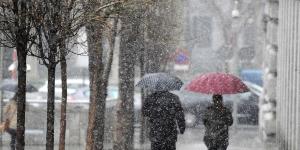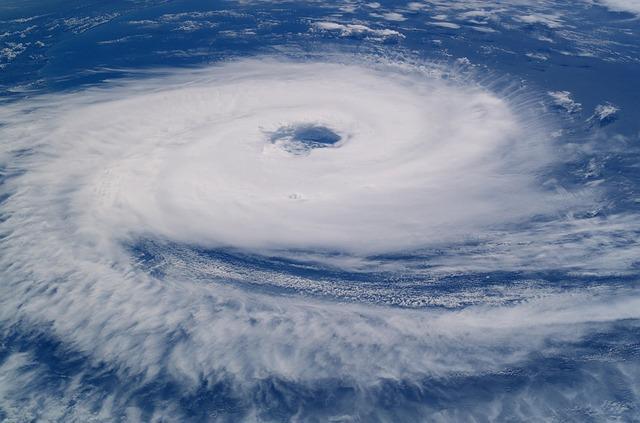What Is a Hurricane and How Does It Form?


Hurricanes, often referred to as tropical cyclones or typhoons in different regions of the world, are awe-inspiring meteorological phenomena. These immense storms, characterized by powerful winds and torrential rains, can unleash catastrophic forces of nature upon the areas they make landfall. Hurricanes originate over warm ocean waters near the equator, harnessing the ocean's heat to form colossal weather systems that cause great damage to coastlines.
The following article by thedailyECO explains what hurricanes are, delving into their formation process and the criteria used to classify them.
What is a hurricane?
A hurricane, also known as a typhoon or cyclone in different parts of the world, is a powerful and large-scale tropical storm characterized by intense winds and heavy rainfall. It forms over warm ocean waters near the equator and gains energy from the heat and moisture in the ocean.
Hurricanes, despite their ferocity, adhere to a structured organization. Their distinct center, known as the eye, is surrounded by a circular assembly of vigorous winds and intense thunderstorms, forming what's termed the eyewall. This concentrated configuration of elements lends hurricanes their immense power and capacity for destruction.
Hurricanes are categorized based on their wind speeds using the Saffir-Simpson Hurricane Wind Scale, which ranges from Category 1 (weakest) to Category 5 (strongest).
The consequences of a hurricane's landfall can be catastrophic. Inflicting widespread damage on infrastructure, flooding from the deluge of rainfall and storm surges, and imposing considerable risks to both human lives and property, hurricanes showcase the immense force of nature.

How do hurricanes form?
Hurricanes form through a complex interplay of oceanic and atmospheric conditions. The process begins with warm ocean waters and specific weather patterns. Here's a simplified explanation of how hurricanes form:
- Warm ocean waters: hurricanes require warm ocean waters, typically around 26.5°C (80°F) or higher, as their primary source of energy. Warm water evaporates, rising into the atmosphere as moist air.
- Evaporation and condensation: the warm, moist air over the ocean's surface rises due to convection currents. As the air ascends, it cools and condenses into clouds, releasing latent heat. This heat warms the surrounding air and causes further upward movement, creating a low-pressure area at the surface.
- Coriolis effect: for a hurricane to form, the Coriolis effect, caused by the Earth's rotation, is necessary. This effect imparts a spin to the rising air, creating a rotating pattern around the low-pressure center.
- Formation of a tropical disturbance: as the rotating system gains momentum, it becomes a tropical disturbance. This is a disorganized cluster of clouds and thunderstorms with a weak center of circulation.
- Tropical depression: if the tropical disturbance continues to intensify and the winds reach a sustained speed of up to 38 mph (61 km/h), it is upgraded to a tropical depression.
- Tropical storm: if the sustained winds further strengthen to around 39 to 73 mph (63 to 118 km/h), the system becomes a tropical storm and receives a name. At this point, the storm gains a more defined center and starts to display the characteristic circular pattern of clouds and thunderstorms.
- Eye formation: in the center of the developing storm, a calm area known as the eye forms. This area has relatively light winds and clear skies.
- Eyewall development: around the eye, the eyewall takes shape. This is a ring of intense thunderstorms where the most powerful winds and heaviest rainfall occur.
- Hurricane formation: if the storm's winds continue to strengthen, reaching sustained speeds of 74 mph (119 km/h) or higher, the system officially becomes a hurricane. The hurricane's eye and eyewall become well-defined, and the storm intensifies further.
Throughout these stages, the hurricane feeds off the warm ocean waters, releasing heat into the atmosphere and driving the storm's circulation. This process of heat release and moisture condensation fuels the hurricane's power, making it a potent and often destructive force of nature.
Be sure not to overlook another article that provides an explanation for the cause of the Coriolis effect.
How are hurricanes classified?
Hurricanes are classified into five distinct categories based on the intensity of their winds, the potential for generating powerful waves, and their capacity to induce flooding. These categories serve as benchmarks to gauge the destructive potential of these storms:
- Category 1: characterized by winds ranging from 118 to 153 km/h (74 to 95 mph), Category 1 hurricanes possess minimal capacity to cause significant damage to Earth's infrastructure.
- Category 2: falling within the wind speed range of 154 to 177 km/h (96 to 110 mph), Category 2 hurricanes exhibit a moderate capacity to inflict damage.
- Category 3: encompassing wind speeds between 178 and 209 km/h (111 to 130 mph), Category 3 hurricanes wield an extensive capability to cause substantial damage.
- Category 4: spanning wind speeds from 210 to 250 km/h (131 to 155 mph), Category 4 hurricanes boast an extreme potential to generate extensive damage.
- Category 5: with wind speeds surpassing 250 km/h (156 mph), Category 5 hurricanes possess a catastrophic capacity to wreak havoc, causing severe and often widespread destruction.
These categories provide valuable insights into the anticipated impact of a hurricane, offering critical information for preparedness, response, and mitigation efforts aimed at minimizing potential damage and safeguarding lives.
The most devastating hurricanes in history
Understanding the severity of historical hurricanes goes beyond their wind speed alone; it hinges on the interplay between their impacts, the environment they encounter, and the regions they affect. Here are some of the most devastating hurricanes:
- The Great Hurricane of 1780 (Hurricane San Calixto): this catastrophic hurricane struck the Caribbean islands, including Martinique and Barbados, causing an estimated 22,000 deaths. It remains one of the deadliest hurricanes in recorded history.
- Hurricane Katrina (2005): Among the most infamous hurricanes, Katrina slammed into the Gulf Coast of the United States, particularly New Orleans. It resulted in over 1,800 deaths, extensive flooding, and approximately $125 billion in damages.
- The Galveston Hurricane of 1900: This hurricane struck Galveston, Texas, causing a storm surge that inundated the city and claimed an estimated 8,000 to 12,000 lives. It remains the deadliest natural disaster in U.S. history.
- Hurricane Mitch (1998): Mitch struck Central America, causing widespread flooding and landslides. The storm led to around 11,000 fatalities and left many more homeless.
- The 1935 Labor Day Hurricane: This Category 5 hurricane struck the Florida Keys, causing immense destruction and resulting in over 400 deaths.
- Hurricane Haiyan (Yolanda) (2013): One of the strongest tropical cyclones ever recorded, Haiyan struck the Philippines with devastating force. It caused over 6,000 deaths and widespread destruction.
- Hurricane Harvey (2017): Harvey caused catastrophic flooding in Houston, Texas, and the surrounding areas. The storm's heavy rainfall resulted in severe flooding and economic losses exceeding $125 billion.
- The 1970 Bhola Cyclone: This catastrophic cyclone struck East Pakistan (now Bangladesh), leading to an estimated 300,000 to 500,000 deaths.
These hurricanes stand as grim reminders of the immense power of nature and the far-reaching impacts of these destructive forces. You might be interested in this other article where we explain what causes sandstorms.

If you want to read similar articles to What Is a Hurricane and How Does It Form?, we recommend you visit our Meteorological phenomena category.







